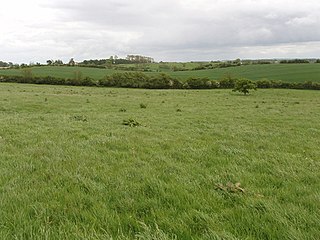
Zoning is a method of urban planning in which a municipality or other tier of government divides land into areas called zones, each of which has a set of regulations for new development that differs from other zones. Zones may be defined for a single use, they may combine several compatible activities by use, or in the case of form-based zoning, the differing regulations may govern the density, size and shape of allowed buildings whatever their use. The planning rules for each zone determine whether planning permission for a given development may be granted. Zoning may specify a variety of outright and conditional uses of land. It may indicate the size and dimensions of lots that land may be subdivided into, or the form and scale of buildings. These guidelines are set in order to guide urban growth and development.

Thames Gateway is a term applied to an area around the Thames Estuary in the context of discourse around regeneration and further urbanisation. The term was first coined by the UK government and applies to an area of land stretching 70 kilometres (43 mi) east from inner east and south-east London on both sides of the River Thames and the Thames Estuary. It stretches from Westferry in Tower Hamlets to the Isle of Sheppey/Southend-on-Sea and extends across three ceremonial counties.

Ruskin Square is a project to redevelop a parcel of land between East Croydon railway station and the existing town centre of Croydon in South London. It is part of the major Croydon Vision 2020 regeneration scheme. It has been subject to substantial public debate which has featured in the national media.
Town and country planning in the United Kingdom is the part of English land law which concerns land use planning. Its goal is to ensure sustainable economic development and a better environment. Each country of the United Kingdom has its own planning system that is responsible for town and country planning, which outside of England is devolved to the Northern Ireland Assembly, the Scottish Parliament and the Senedd.
A resource consent is the authorisation given to certain activities or uses of natural and physical resources required under the New Zealand Resource Management Act. Some activities may either be specifically authorised by the RMA or be permitted activities authorised by rules in plans. Any activities that are not permitted by the RMA, or by a rule in a plan, require a resource consent before they are carried out.

The Town and Country Planning Act 1990 is an act of the United Kingdom Parliament regulating the development of land in England and Wales. It is a central part of English land law in that it concerns town and country planning in the United Kingdom. Repealed in parts by the Planning and Compensation Act 1991, it is now also complemented by the Planning and Compulsory Purchase Act 2004.
Development Management, formerly known as planning control, or development control, is the element of the United Kingdom's system of town and country planning through which local government or the Secretary of State, regulates land use and new building, i.e. development. It relies on a "plan-led system" whereby development plans are produced, involving various stages of public consultation prior to being adopted. Subsequently, development that requires planning permission, which is granted or refused with reference to the development plan as the starting point, then other material considerations are taken into account. The term "development management" is often abbreviated to DM.

The Town and Country Planning (England) Order 2015 is a statutory instrument, applying in England, that grants planning permission for certain types of development. Schedule 2 of the GPDO 2015 specifies the classes of development for which planning permission is granted, and specifies the exceptions, limitations, and conditions that apply to some of these classes. The GPDO 2015 was made by the Secretary of State under authority granted by sections 59, 60, and 333 of the Town and Country Planning Act 1990.
The Waste Management Licensing Regulations 1994 formerly applied in Great Britain to those persons involved in the collection, storage, treatment and disposal of controlled wastes. The regulations dictate the licensing of persons or businesses involved in the management of waste and relate directly to the licensing of a site or activity to carry out the management, processing and disposal of wastes. These activities were previously covered by provisions contained within the Control of Pollution Act 1974 (COPA). The regulations implement certain provisions of European Directive 91/156/EEC and are enacted under the Environmental Protection Act 1990.
Overdale was a small residential district in downtown Montreal that became a famous symbol of the struggle between urban conservationists and land developers.
Planning gains are ways that local authorities in the United Kingdom can secure additional public benefits from developers, during the granting of planning permission.

Nationally significant infrastructure projects (NSIP) are major infrastructure developments in England and Wales that bypass normal local planning requirements. These include proposals for power plants, large renewable energy projects, new airports and airport extensions, and major road projects. The NSIP nomenclature began to be used in 2008, and since April 2012 these projects have been managed by the Planning Inspectorate.

Brent Cross Cricklewood is a new town centre development under construction in Hendon and Cricklewood, London, United Kingdom. The development is planned to cost around £4.5 billion to construct and will include 6,700 homes, workspace for 25,000 people, four parks, transport improvements and a 592,000 sq ft (55,000 m2) extension of Brent Cross Shopping Centre. The developers of the scheme are Hammerson and Standard Life.

The London Resort is a proposed theme park and resort in Swanscombe, Kent, first announced on 8 October 2012 and since repeatedly delayed. Examination of its application for planning permission has also been delayed. Eventually, a decision will be made by the Secretary of State.
Low-impact development (LID) has been defined as "development which through its low negative environmental impact either enhances or does not significantly diminish environmental quality".

Forge Wood is the 14th residential neighbourhood in Crawley, a town and borough in West Sussex. The 1,900 houses and other facilities will be built on open land in the northeast of the borough, adjoining the ancient village of Tinsley Green and to the north of the Pound Hill neighbourhood.

Fawcett Properties Ltd v Buckingham County Council [1960] has become a leading case in planning law and concerned agricultural conditions of use. It is also relevant for its tests on finding certainty versus uncertainty of policy, contract or other concepts rendering them void. It has been applied in English trusts law which has long held a cy-près doctrine, expressed in pre 1649-Law French meaning "there nearly" that is perfecting concepts or a purpose for funds which is tantamount to a legitimate interest or concern and intended to take clear effect.

The Goodsyard is a proposed development on the site of the former Bishopsgate Goods Yard in Shoreditch, London. It spans the border between the two London boroughs of Hackney and Tower Hamlets. The scheme, which is a joint venture between developers Hammerson and Ballymore, previously included 12 buildings, the tallest of which was planned to be 166-metre (545 ft) tall with 46 floors. In total, 1,356 homes were proposed, as well as offices, retail and workshop space and a 0.97-hectare (2.4-acre) park.
Outline Planning Permission is an initial form of planning permission in English land law, whereby the applicant gains feedback as regards the scale and nature of a proposed development from the local planning authority. It enables the applicant to see whether a proposal is likely to be accepted before going to the expense of drawing up a detailed planning application.

Romani people have been recorded in the United Kingdom since at least the early 16th century. Records of Romani people in Scotland date to the early 16th century. Romani number around est. 225,000 in the UK. This includes the sizable population of Eastern European Roma, who immigrated into the UK in the late 1990s/early 2000s, and also after EU expansion in 2004.












